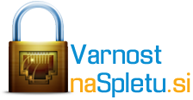Summary: This study compares the SIBIS2002 survey data on information-communication technology (ICT) developments among establishments in selected 7 EU countries (Finland, France, Germany, Spain, Italy, UK, Greece) with the Slovenian RIS data for same year. The key findings are as follows:
- With respect to the basic infrastructure, Slovenia shows relatively high penetration of general ICT, such as computers, Internet access, Web sites, call centers. Here, Slovenia is on the EU-7 average and in some aspects even above the average. However, when it comes to more elaborated technologies, a gap appears, e.g. video-conferencing (Si 7% vs. EU-7 15%), Intranet (Si 12% vs. EU-7 28%), EDI (Si 3% vs. EU-7 13%), and Extranet (Si 3% vs. EU-7 6%).
- The share of Slovenian companies that experienced some type of security breaches in last 12 months is dramatically higher compared to EU (75% vs 19%). However, this basically refers to viruses, while other types were in fact much less frequent in Slovenia (unauthorized entry, manipulation of software application, identity theft, on-line fraud). Another difference is that Slovenian companies perceive the largest threat from hackers and other anonymous sources, while in EU the internal users and customers present significantly higher danger. Nevertheless, the largest difference arises in the aspect of formalizing the security policy - only 8% of Slovenian companies have some formal security policy documented (EU- 35%).
- Slovenian companies expressed more positive attitudes towards e-Government compared to EU. We already observed such trend in SIBIS General Population Survey (GPS). However, opposite to GPS - where considerable lag was found with respect to the actual usage, the Slovenian companies show approximately the same level of e-Government activities compared to EU.
The R&D (Research and Development) activities are present in approximately the same percentage of companies in Slovenia as in EU (i.e. 40%). However, in Slovenia much less employees are involved in R&D. In addition, these activities are much less formalized in Slovenia - we encounter formal R&D divisions/sections much less frequently in Slovenia compared to EU.
Full report (70 pages in English, RIS Report #46) is available on request.
Vir: RIS



